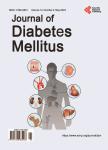Prevalence and Correlates of Prediabetes and Diabetes Results-I: A Screening Plan in a Selected Military Community in Central Saudi Arabia
Prevalence and Correlates of Prediabetes and Diabetes Results-I: A Screening Plan in a Selected Military Community in Central Saudi Arabia作者机构:Community Health Research Institute International Management-Health Services Indianapolis IN USA Community Medicine Program Armed Forces Hospitals Taif KSA Preventive Medicine Department Armed Forces Hospital at Wadi Al-Dawasir Riyadh KSA Family Medicine Department Armed Forces Hospital at Wadi Al-Dawasir Riyadh KSA
出 版 物:《Journal of Diabetes Mellitus》 (糖尿病(英文))
年 卷 期:2017年第7卷第1期
页 面:12-30页
学科分类:1002[医学-临床医学] 100201[医学-内科学(含:心血管病、血液病、呼吸系病、消化系病、内分泌与代谢病、肾病、风湿病、传染病)] 10[医学]
主 题:Pre-Diabetes Diabetes Wadi Al-Dawasir Saudi Arabia
摘 要:Background: Diabetes is a chronic disease of a genetic and environmental background. If it is not diagnosed and controlled early, it can have devastating complications. Aim: Measure and analyze the prevalence and risks of prediabetes and diabetes among recruits enlisted in the Wadi Al-Dawasir (WD) military zone, central Saudi Arabia. The influence of some demographic criteria, weight, and blood pressure upon blood glucose level would be evaluated. Methods: A cross sectional design was utilized, whereas predesigned questionnaire and clinical interview were used to screen the study population. Results: The participants’ median age was 33.7 (IQR 11.9), mean body mass index (BMI) was 27.6 ± 5.4 kg/m2. Out of 531 recruits screened, almost two-thirds were either overweight (34.7%) or obese (29.9%). The mean waist circumference (WC) was 94.7 ± 13.3 cm;and 27.9% had central obesity (WC ≥102 cm). Random plasma glucose (RPG) median accounted 106 mg/dl (IQR 21). The participants’ RPG levels significantly increased by age (U = 19697.0), by BMI [H(df 5) = 59.6], and by WC (U = 25,670.5), (p rho(df 503) = 0.241, p U 3515, p 25 to ≥40 kg/m2) more than normal subjects [46 (87%) vs. 5 (0.9%)], [χ2(df 5) = 18.8, p Conclusions: Prediabetes and uncontrolled diabetes are relatively prevalent among Saudi recruits’ community. An insufficient influence of obesity for developing diabetes symptoms in the study population may well be attributed to time factor separating the two variables. A preventive approach to revert the predisposition of prediabetes in WD recruits population is quite promising.



